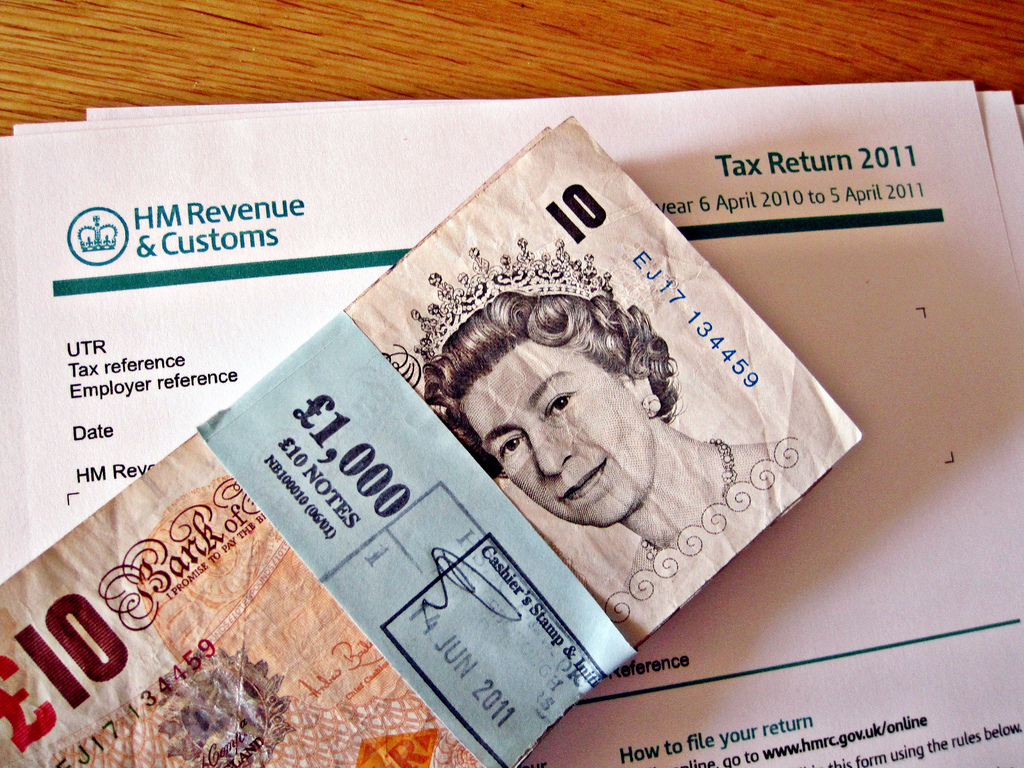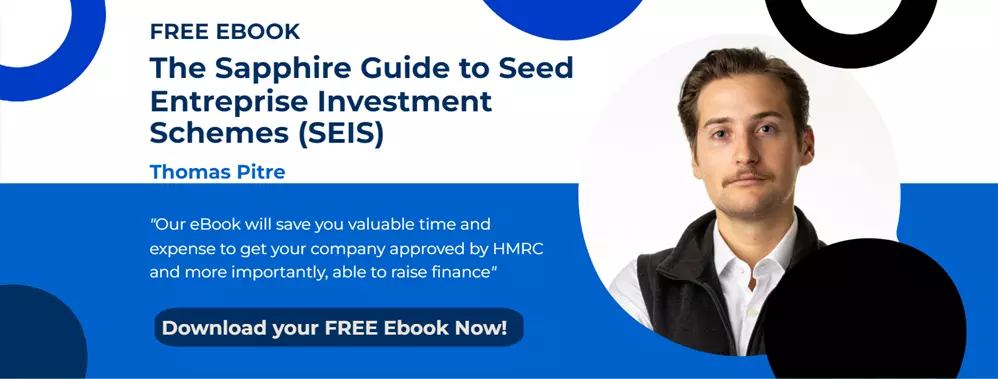 We are often asked to explain the EIS tax reliefs. They are definitely generous and can make any investment more attractive, or at least, help to protect from downside risk. Before explaining the tax reliefs in more detail, a word of caution: as I explained in a previous blog article Investing in an EIS? Why you still need to do your homework - you need to make sure you don't focus all your energy on understanding the EIS tax rules and remember to do your due diligence on the underlying investment i.e. its management, the business model, the market opportunities, the competition etc. Enough said.
We are often asked to explain the EIS tax reliefs. They are definitely generous and can make any investment more attractive, or at least, help to protect from downside risk. Before explaining the tax reliefs in more detail, a word of caution: as I explained in a previous blog article Investing in an EIS? Why you still need to do your homework - you need to make sure you don't focus all your energy on understanding the EIS tax rules and remember to do your due diligence on the underlying investment i.e. its management, the business model, the market opportunities, the competition etc. Enough said.
There are basically FOUR EIS tax reliefs I want to cover as follows:
- Income Tax Relief (30% upfront income tax relief).
- Capital Gains Tax Re-investment Relief (tax free growth).
- EIS Loss Relief against Income or Capital Gains (loss set against income to reduce tax).
- IHT Relief and Business Property Relief (100% IHT relief after two years).
In this first article, I will cover Income Tax Relief.
Income Tax Relief
In order to qualify for Income Tax Relief, an investor must hold a qualifying investment for a minimum period of three years from the date of issue, or when trade commences if later. In order to claim Income Tax Relief, the investor must not be deemed connected with the issuing company. A definition of a connected investor is contained below in Note A towards the bottom of this blog article.
A qualifying investor will attract Income Tax Relief at 30% of the investment, subject to having sufficient taxable income.
An Income Tax Saving Example
Mr. Brown has income in the tax year as a result of which he would owe £30,000 income tax to HMRC. If Mr. Brown were to invest £100,000 into a qualifying EIS company in the same tax year (or the next tax year), his income tax liability to HMRC would be reduced to zero. His investment into the EIS company would therefore have effectively cost him £70,000 for an investment in shares worth £100,000.
| £ | |
| Investment in the Company | 100,000 |
| Less: Income Tax Relief at 30% | (30,000) |
| Net cost of investment into the Company | 70,000 |
In the above example, in the situation where an investor has an Income Tax liability of £30,000 (see Note 1 below) and subscribes for £100,000 worth of ordinary shares in an EIS qualifying company, the resulting Income Tax liability will be reduced to zero, providing the investor meets the qualifying conditions for EIS relief.
This has a significant impact on the potential returns of the investment. If for example an investor put in £10,000 and got back exactly £10,000 four years later (i.e. the company made no money), the net tax free return would be 10.3% per annum.
It gets better, if for example the investor put in £10,000 and got back 5% more - £10,500 - four years later, the net tax free return would be 10.7% per annum. If the company lost money, for example 20% - and the investor only gets back £8,000 - the investor still makes money and has a 3.3% annual return.
It should be noted that the maximum level of investment qualifying for income tax relief is £1,000,000 per investor in one or more qualifying companies for the 2012/2013 tax year. As a result, up to £300,000 tax relief can be claimed by the investor (£150,000 for 2011/2012), providing the investor has a sufficient taxable income to allow full relief, and makes no other EIS investments in the tax year.
An investor can carry back 100% of their investment to the previous tax year for income tax purposes, subject to the overall annual investment limit of £1,000,000. Therefore, an investment made in 2012/2013 can be carried back to the 2011/2012 tax year.
If an investor chooses to set the relief against their 2012/2013 tax liability and is required to make self-assessment payments on account in January and July 2013, it may be possible to reduce the required payments.
Income Tax Relief and Capital Gains Tax Deferral Relief combined:
Although I will cover Capital Gains Tax Relief in more detail in the second blog article of this series, it should be noted that when an investor combines Income Tax Relief with Capital Gains Tax Deferral Relief the net immediate cost of the investment is significantly reduced, as the below example demonstrates:
|
Example:
|
CGT@18% |
CGT @28% |
|
Investment in the Company |
100,000 |
100,000 |
|
Income Tax Relief at 30% (see Note 2 below) |
(30,000) |
(30,000) |
|
Capital Gains Tax Re-Investment Relief |
(18,000) |
(28,000) |
|
Net immediate cost of investment |
52,000 |
42,000 |
In this example the Investor makes a disposal which results in a Capital Gain (ignoring available capital gains tax exemptions and reliefs) of £100,000 and also claims the available Income Tax Relief. By subscribing for £100,000 of ordinary shares and claiming Capital Gains Tax Re-Investment Relief, the Investor will defer between £18,000 and £28,000 of capital gains tax, depending on the rate applicable at the time of that disposal.
Additionally, an income tax credit of £30,000 (subject to having income sufficient to utilise the relief in full) would be available in the tax year that subscription was made.
Note A: Connected Investors
The rules surrounding connected persons can be complex, and it is recommended that an Investor should seek tax advice before making an investment.
In order to qualify for Income Tax Relief, an Investor and those connected to him can hold not more than 30% of:
- The issued ordinary share capital of the Enterprise Investment Scheme company or any subsidiary;
- The loan capital and issued share capital of the Enterprise Investment Scheme company or any subsidiary; or
- The voting power in the Enterprise Investment Scheme company or any subsidiary.
Connected persons include (but not exhaustively) the following:
- The spouse/civil partner of the Investor individual;
- A relative of the Investor individual;
- A relative of the spouse/civil partner of the Investor individual;
- A partner of a partnership in which the Investor individual is a partner;
- An individual who is connected to a company he has control of, or he with persons connected with him, have control of.
The most common situation would therefore be where a married/civil partnership couple may wish to invest. In these circumstances, their joint investment must represent less than 30% (in the context described above). For example, if the Enterprise Investment Scheme company is fully subscribed at £1,500,000, the maximum a married/civil partnership couple may subscribe for shares between them is £450,000.
It should be noted that the conditions and reliefs are based on existing law and understanding of current HM Revenue and Customs practices, and are therefore subject to change.
Investors are strongly recommended to seek independent professional advice on the tax consequences of acquiring, holding and disposing of EIS qualifying shares before proceeding with an investment into an EIS company.
Reference Notes:
Note 1: The income tax liability must be derived from sources with refundable tax. For example, dividends taxed at basic rate carry a 10% tax credit, however, the 10% tax credit is non-refundable.
Note 2: 30% for 2011/2012 and 20% for 2010/2011.



